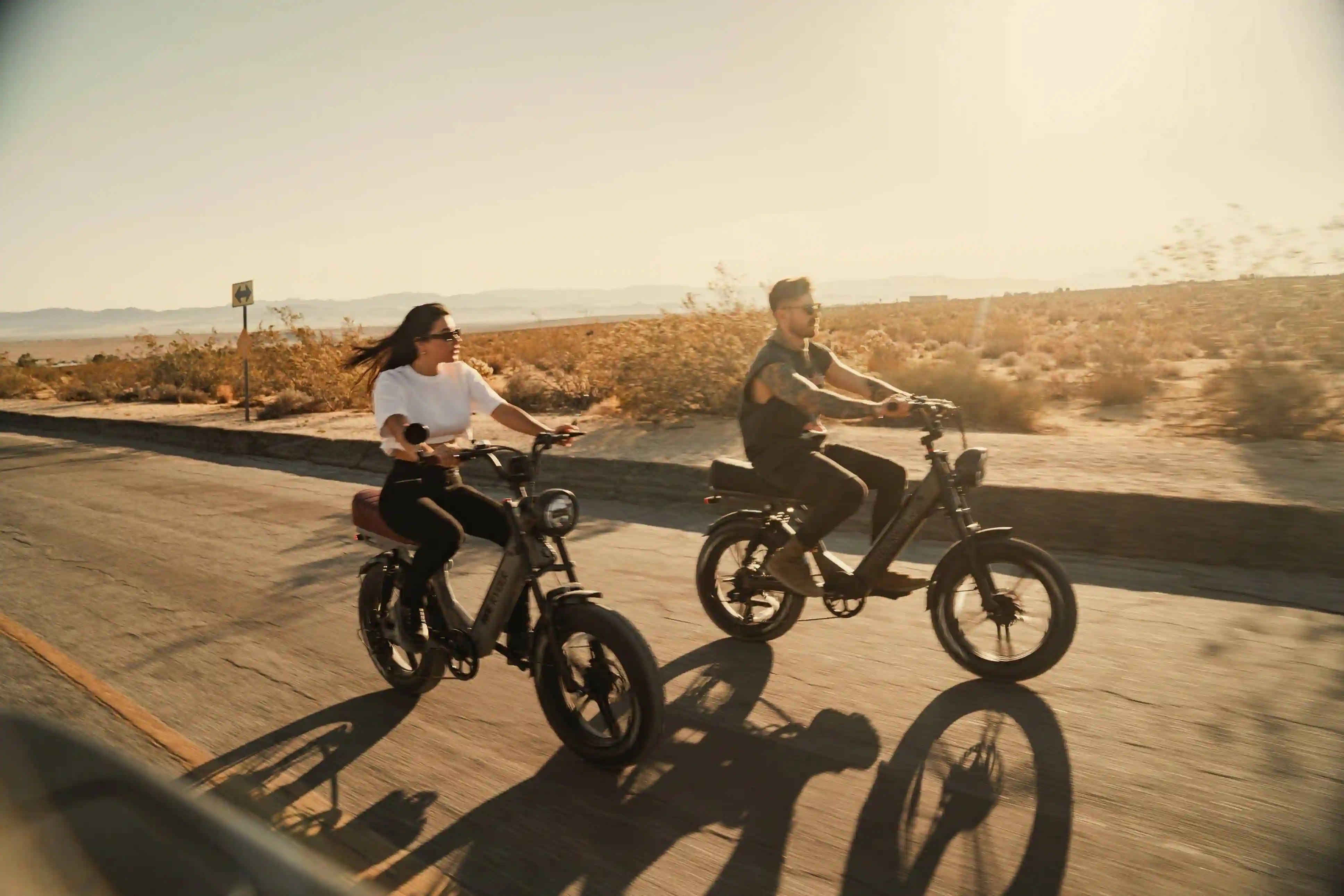E-bikesare changing the way we think of hard terrain and steep hills. Combining conventional biking mechanics with advanced technology, they're the last car for riders who like smoothness with a bit bit of thrill. Be an eco-friendly commuter, an avid bicycle owner, or an outdoor adventurer, the concept of e-bikes opens up new horizons for hill conquering. Here's how e-bikes tackle hilly routes, the factors that come into play, and some actual-world advice for upping your uphill rides.
Let's check our latest electric bike collection and E-MTB list!
The Power of Electric Bikes: Changing the Game
E-bikes merge classical biking with superior generation to provide a combination of functionality and comfort unparalleled with the aid of other modes of shipping. Fitted with electric automobiles, advanced batteries, and smart manipulate systems, e-bikes have the ability to help their riders over steep climbs with minimal effort. Be it in hilly cities or rugged trails, the support of the motor makes uphill cycling rather accessible and pleasurable.
But what truly separates e-bikes from their non-motorized brethren is that they can pedal-assist or throttle through the most extreme angles. Riders can depend on the motor to exaggerate their effort, making even the steepest inclines somewhat negotiable. With modern e-bikes offering torque anywhere between 60Nm and 80Nm, this becomes a really smooth affair. Using the Gibbon and Bonobo e-bikes as examples, high torque enables them to glide up inclines with ease while combining power and efficiency effectively.
Key Factors That Make E-Bikes Hill-Friendly
There are 3 important motor kinds for electric powered bikes, every serving different functions. Hub motos, which might be established in the hubs of the wheels, are higher acceptable for flat, regular riding and concrete commuting because of their simplicity and reliability. Mid-drive motors, mounted close to the pedals, are perfect in hilly regions due to efficient torque transport, with higher weight distribution making them perfect for steep rides and difficult terrains. Friction drive motors are less common, attach to the rear wheel, and provide flexibility for the occasional riders needing a simple, temporary motor solution.
Mid-drive motors are the most efficient and effective way to go in hilly terrain.
A good hill-climbing capacity requires a reliable battery, and most e-bikes use lithium-ion batteries because of their high energy density and long life span. The capacity in watt-hours dictates the range and power output of the battery so that the motor will be sure of performing consistently on hill rides. Good maintenance and proper habits in charging can extend a battery's life and give dependable performance for several years. The capacity of batteries increases the suitability of an e-bike for long rides in hilly regions; this will keep the motor power on for a longer distance.
Torque is a critical factor for climbing capabilities, measured in newton-meters, and it defines the motor's capability to rotate the wheels on steep inclines. E-bikes with 60Nm or higher torque ratings easily deliver the power needed for smooth ascents, making the ride easier on the rider. With multi-speed drivetrains, which also allow a rider to adjust to various terrains, these features ensure a comfortable and efficient climb. Lower gears ease pedaling during inclines by enhancing motor support, enabling riders to confidently tackle challenging routes.
Benefits of E-Bikes for Hills
E-bikes revolutionize the uphill cycling experience, reducing the physical strain that comes from biking up steep inclines. Due to the motor help, riders use less strength at the same time as seeing extra and preserving their stamina for longer rides with out fatigue. This makes e-bikes an ideal companion for casual riders and those who want to push it on scenic, hilly routes. This added boost will ensure that biking remains great, even on the maximum hard terrains, making difficult climbs practicable and fun.
The accessibility afforded by using e-bikes offers cyclists of all abilities to take on steep climbs with self assurance. They open up new routes and locations to go to. For many, hilly regions are no longer a disincentive. In cities with demanding topography, e-bikes additionally facilitate commuting, supplying alternatives which are realistic, no longer sweaty, either towards vehicles or public transportation. Riders can display up at their vacation spot in consolation, while last within the blessings of sustainable journey. By combining comfort, overall performance, and eco-consciousness, e-bikes make navigating hills each handy and profitable.
Practical Tips for Climbing Hills with E-Bikes
When approaching hills on an ebike, there are a few strategies that will make your ride easier and more effective. Gear down to start; this can ease the pedaling and make the motor's job easier on rises. Then there's wise use of the pedal assist: start with a lower assistance level and press up gradually, as required by the grade, to minimize battery drain while keeping control of the ebike. Besides, it is very important to go at a constant speed, never with sudden accelerations, which consume more battery. Instead, always make smooth, midrange speeds for the best performance and an easy ride uphill.
Debunking Myths About E-Bikes and Hills
A lot of people say that ebikes are only for riding on the flats, but nothing can be farther from the truth. Because they come fitted with strong motors and high-capacity batteries, ebikes are great to use on hilly terrain and can make steep climbs almost effortless. With the right amount of torque and motor efficiency, there isn't a gradient that can't be easily pedaled, making what is traditionally seen as hard work into something quite enjoyable. This versatility opens up new routes and destinations that would have been unimaginable, proving that ebikes are capable beyond flat-surfaced ones.
Another myth that has been believed is that e-bikes will make people lazy, when in reality, they still require pedaling, especially in pedal-assist modes. This provides a balanced workout by reducing strain without eliminating effort, making riders want to go farther and cycle more often. Moreover, there's also the totally-diminished reliability issue. Since an e-bike features more robust components with advanced technology, modern e-bikes perform very similarly over a wide variety of terrain. They offer the same reliability, with regular maintenance, as any other traditional bicycles and thus are quite dependable for daily rides or even adventurous ones.
Future of E-Bike Technology
The technology behind e-bikes is rapidly progressing. More effective yet energy-green cars promise a drastic boom in hill-hiking performance. Newer improvements in battery era promise longer tiers and shorter charging instances. Advancement of functions like GPS integration, performance monitoring, and connectivity similarly enhance the person experience by means of making the e-bikes smarter and extra versatile.
E-bikes make hills easier to pedal for any category of rider and make it very easy to address steep inclines with ease. They reduce bodily strain, growth get admission to, and enhance commuters' reviews, making them simply the proper match for eco-aware transportation and outside exploration. With the proper model and some practical tips, you will be confident to tackle any climb and enjoy the freedom and excitement that e-bikes offer.









Leave a comment
All comments are moderated before being published.
This site is protected by hCaptcha and the hCaptcha Privacy Policy and Terms of Service apply.